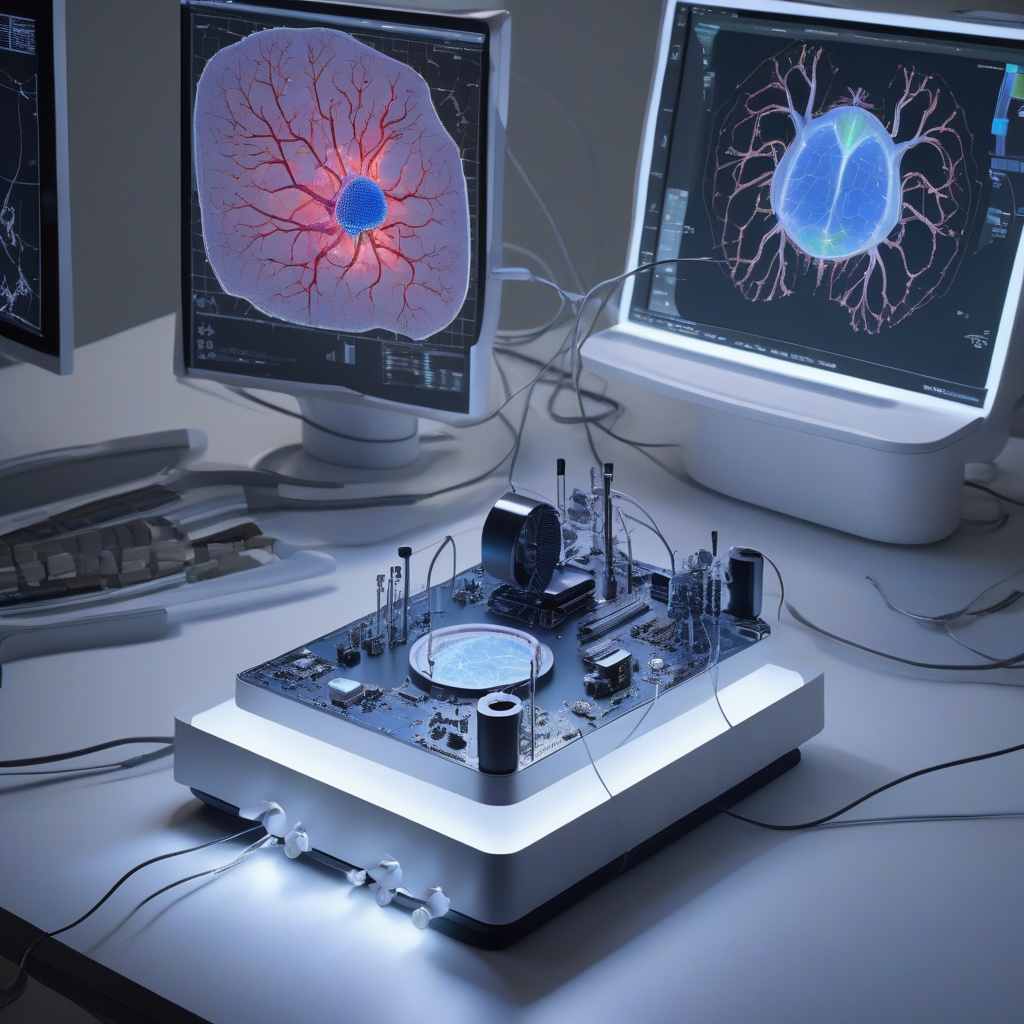Glimpse into the brain: Mini imaging device reveals neural activity in real time
Scientists have developed a new, compact imaging device that is set to transform how we understand the complexities of the human brain. This groundbreaking technology allows researchers to monitor neural activity in real time, providing unprecedented insights into the inner workings of the brain.
The miniature imaging device, known as NeuroVision, utilizes cutting-edge optical imaging techniques to visualize neural activity at a cellular level. By leveraging advanced algorithms and high-resolution imaging sensors, NeuroVision is able to capture detailed images of neural circuits with remarkable precision.
One of the key advantages of NeuroVision is its portability and ease of use. Unlike traditional imaging technologies that are bulky and require specialized facilities, this miniaturized device can be easily integrated into existing experimental setups. This not only streamlines the research process but also enables researchers to conduct experiments in a wide range of settings, from laboratory environments to clinical settings.
Moreover, NeuroVision offers real-time imaging capabilities, allowing researchers to observe neural activity as it unfolds. This dynamic view of the brain provides valuable information about how different regions of the brain communicate and coordinate their activities. By tracking neural activity in response to various stimuli, researchers can gain insights into how the brain processes information and generates behaviors.
The applications of NeuroVision are vast and diverse. In the field of neuroscience, this technology can help researchers unravel the mysteries of brain disorders such as Alzheimer’s disease, Parkinson’s disease, and epilepsy. By studying abnormal patterns of neural activity, scientists can identify potential biomarkers for early disease detection and develop targeted treatment strategies.
Beyond neuroscience, NeuroVision has the potential to revolutionize fields such as artificial intelligence and brain-computer interfaces. By mapping neural circuits involved in specific tasks or behaviors, researchers can create more sophisticated AI algorithms that mimic the brain’s processing capabilities. Similarly, in the realm of brain-computer interfaces, real-time imaging of neural activity can enhance the precision and efficiency of neural prosthetic devices.
The development of NeuroVision represents a significant milestone in the quest to unlock the secrets of the brain. By providing researchers with a powerful tool to visualize neural activity in real time, this mini imaging device has the potential to drive groundbreaking discoveries and innovations in the fields of neuroscience, AI, and beyond. As our understanding of the brain continues to deepen, the possibilities for harnessing its power for the benefit of society are endless.
In conclusion, the mini imaging device NeuroVision holds immense promise for advancing our knowledge of the brain and revolutionizing how we approach neurological disorders, artificial intelligence, and brain-machine interfaces. With its compact design, real-time imaging capabilities, and wide-ranging applications, NeuroVision is poised to usher in a new era of discovery and innovation in brain research.
neuroscience, imaging technology, brain research, neural activity, artificial intelligence












